Mushroom Foraging: Farming the Forest Floor
Colorful characters, seedy motels, and cold, hard cash – welcome to the backwoods world of the wild mushroom trade.
Mushroom Foraging: Farming the Forest Floor
Colorful characters, seedy motels, and cold, hard cash – welcome to the backwoods world of the wild mushroom trade.
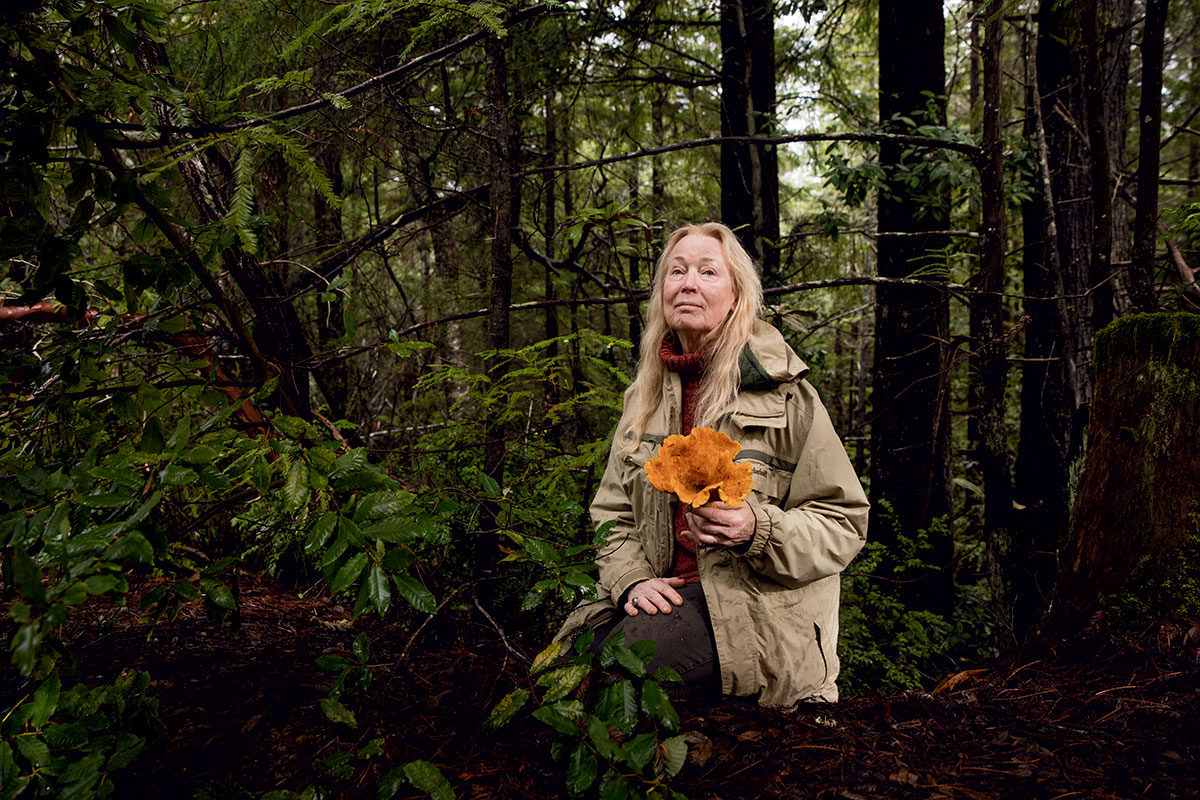
Each autumn, as heavy rains bring chanterelles and porcini out of dormancy, small signs reading “mushroom buyer” begin to dot the Redwood Highway leading into Willits, a Northern California town known equally for its trade in redwood lumber, marijuana, and wild mushrooms. Across the highway from Taco Bell sits a shady-looking motel, where Connie Green has set up shop at a folding table cluttered with plastic baskets, a scale, and a cash box, plus a plate of fine cheese to share. “I’m part of the slick, slick food world, New York and San Francisco and all that,” says Green, owner of Napa’s Wine Forest Wild Foods, which supplies mushrooms to chefs Thomas Keller and Masaharu Morimoto. Green’s long, sun-bleached locks and perpetually dreamy expression give her a fairy-godmother aura, though the fat stub of a cigar in the 66-year-old’s hand when I arrived in Willits last winter suggested other sides to this character’s character.
Green brokers mycorrhizal species, which depend on certain trees, in certain habitats, and thus can’t be cultivated like grocery-store buttons or shiitake. Her fungi require foraging, often on government land. And the Jackson State Forest near Willits proves a prime hunting ground for wild mushrooms both popular and rare, including sweet candy caps, enormous lobsters, and homely matsutake – with a scent that noted mycologist David Arora has described as “a provocative compromise between Red Hots and dirty socks.”
Green, who moves roughly 5,000 pounds of mushrooms each week, pays top dollar, making her a real fairy godmother to the transient populations of Willits and other towns along the West Coast’s commercial foraging circuit, which stretches north to Alaska. The United States Forest Service demands that mushroom pickers secure permits and regulates when, where, and how much can be harvested on public acreage, but the agency doesn’t ask for Social Security numbers.
Many pickers lead semi-nomadic lives, sleeping in cars or camping in the woods.
Many pickers, says Green, lead semi-nomadic lives, sleeping in cars or camping in the woods, because they’re unable to hold down normal jobs due to substance abuse, mental illness, or legal trouble with the IRS or INS. Some have been hiding out here since returning from the Vietnam War with the kind of deep psychological scars that stunt social reintegration. “This profession offers a sense of freedom. We’re an odd, spread-out family,” she explains of the vets, burned-out hippies, disaffected loggers, Mexican immigrants, and Cambodian and Laotian refugees who comprise the underground industry.
These folks have no desire to be interviewed. Green did introduce me to her longtime Willits buyer, a soft-spoken, chain-smoking man who requested that his name not be published. She also took me to hunt hedgehog mushrooms alongside a picker I’ll call “Joan.” Pigtailed, with a Harley-Davidson cap pulled low over her face, Joan discovered a huge, potentially valuable cauliflower mushroom. While we loaded an SUV with crates bound for Napa, Green turned to Joan – clearly an old friend – and asked, “How much vegetation do I have in my hair? I hate when I walk into a restaurant and don’t realize I’m carrying half the forest with me.”
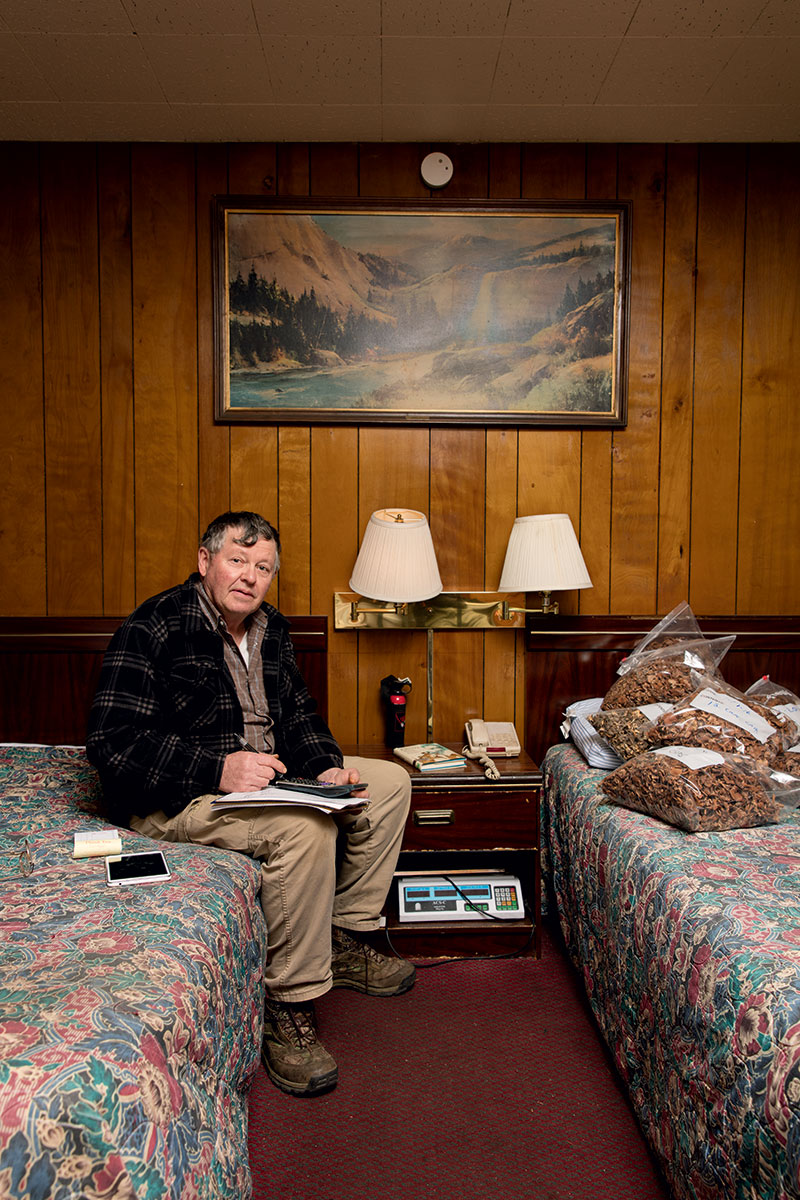
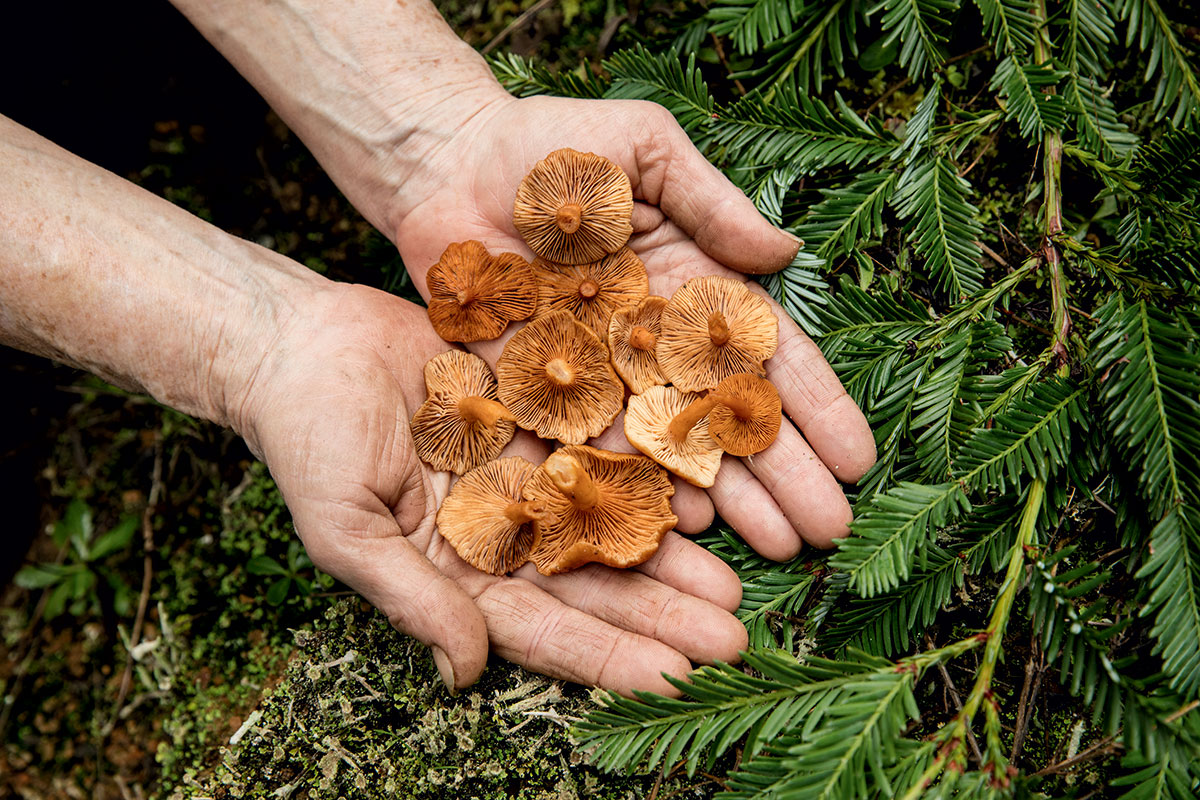
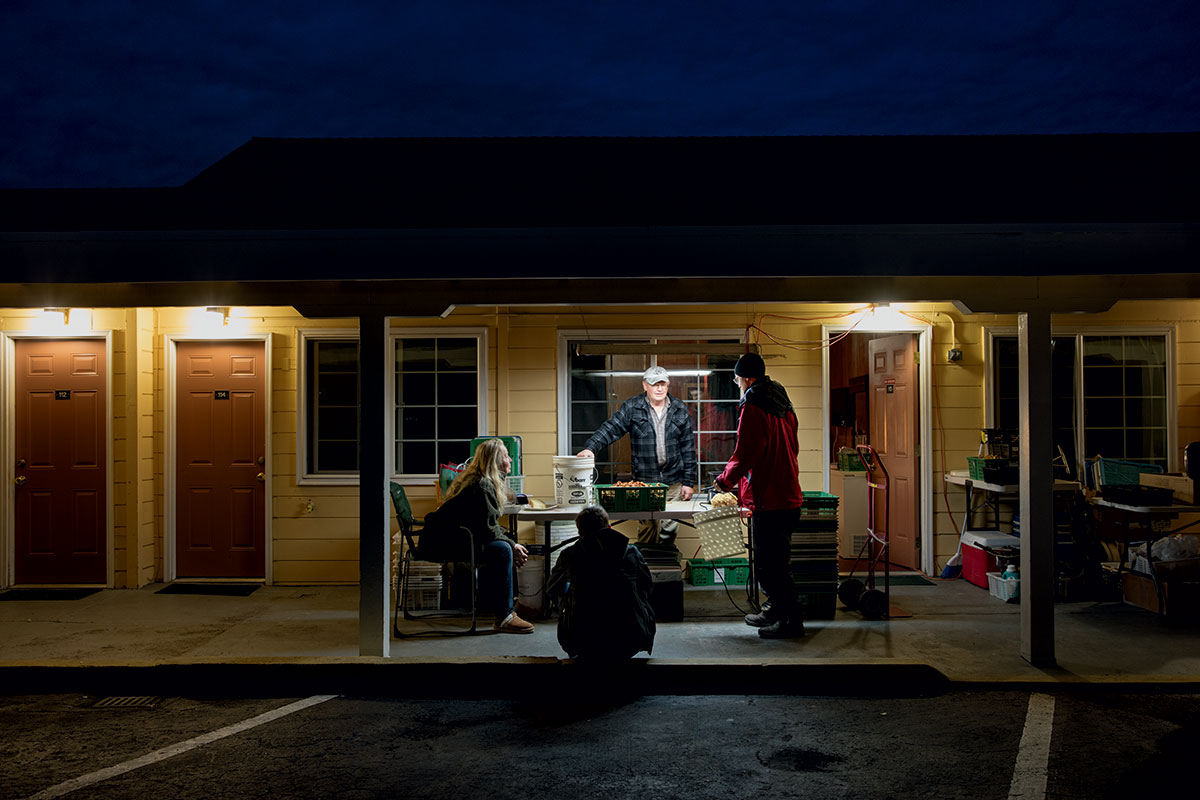
The mushroom-foraging landscape has become increasingly crowded – and complicated – in recent years. Some of the older pickers I spoke with seemed openly resentful of newcomers. Etiquette dictates that young fungi are left alone until mature enough to deserve harvesting, but inexperienced and overzealous foragers tend to grab the little guys. “We call that baby rape,” declares Green. She encourages pickers to spread the spore-holding bits of mushrooms from the bottom of their buckets as a way to seed future crops.
Her Wine Forest Wild Foods is far from the only high-profile mushroom-brokerage firm on the scene these days. Some 35 miles west of Willits, Eric Schramm’s Mendocino Mushrooms (whose clients include that town’s renowned MacCallum House restaurant) operates out of a trailer parked near a scuba shop. According to Schramm, one of Green’s chief rivals, the high value of the product, coupled with remarkably scant regulatory oversight, creates a cutthroat business environment: “The whole game is to have something nobody else does. It’s like any commodity driven by supply and demand. You’ve got to understand the market.”
On the afternoon I visited Schramm’s buying station, foragers arrived around 4 p.m., pants soaked, knees and palms muddy from a day spent in the woods. A glut of yellow foot mushrooms drove the price paid to pickers down to around $2 per pound; another, more elusive, chanterelle, the black trumpet, brought upwards of $10 per pound. “There’s usually an adversarial relationship amongst companies like mine and the local buyers and pickers,” admits Schramm, 65, referring to one of his nemeses as “Dollar-More-a-Pound Mike.”
Schramm recalls the closure of an enormous expanse of national forest near Yosemite Valley following the Rim Fire in 2013, the third-largest burn in California history. Such disasters leave an easy, and lucrative, harvest for pickers. “That fire produced about $20 million in morels, and we couldn’t touch them,” he says. “That’s $20 million that would’ve gone back into the local economy.” Green agrees: “It was wacko. And I mean wacko. They had helicopters looking for pickers and were giving out $1,500 fines. The Forest Service treats us like a tribe of gypsies trying to steal from them.”


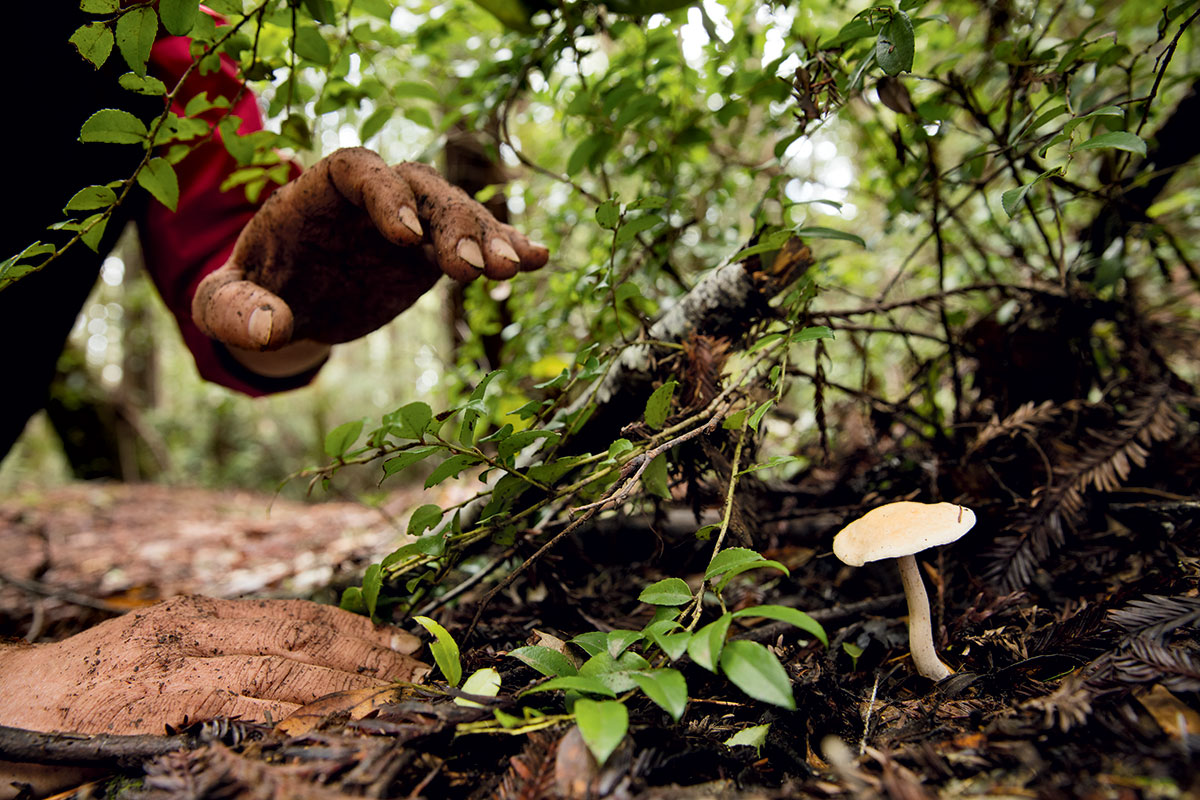
Some mushroom pickers carry guns for protection from bears and mountain lions. Problem is, backwoods marijuana farmers pack heat, too, primarily to protect their crops. According to Green, these pot growers used to slash the tires of mushroom pickers, but an unspoken compromise has emerged, based on differing harvest seasons: From roughly November until the end of March, pickers rule the forest; otherwise, pot presides. “There’s still an overlap in early spring,” she adds. “The pot people are like, ‘You’ve had it all winter, now you don’t get to come in here anymore.’ A curtain drops.”
According to Eric Schramm, the high value of the product, coupled with remarkably scan regulatory oversight, creates a cutthroat business environment.
Beyond gunfire, what else might one encounter in the woods? Old cars, a whole lot of beer cans, a few antlers, some scat, and other signs of animal and human wildlife. Schramm once came across a prosthetic leg. Olivier Matthon (the sole forager who said I could use his real name) remembers an outing a few years back: “A friend and I were checking one last spot, because you always find the best patches at the end of the day.” They did unearth an impressive bed of matsutake – amid human remains. The pair called the sheriff and waited in the dark. “We were close to the road, in a well-known spot. Hundreds of pickers must have seen the body,” says Matthon, blaming the unreported corpse on widespread mistrust of law enforcement. “The Forest Service people don’t like the mushroom pickers.”
Quebec-born, French-speaking Matthon doesn’t fit any ethnic profile associated with the wild mushroom industry. After stints working on organic farms and fishing boats for paltry wages, he found himself lured by the prospect of being his own boss, not to mention stories of mushroom hunters making hundreds of dollars a day. During one of his first forays into the forest, the 39-year-old met a refugee from Laos who – despite the notoriously insular reputation of Southeast Asian pickers – struck up a conversation and invited the Canadian to camp with his family. Matthon still counts these Laotians as his mentors and picking partners.
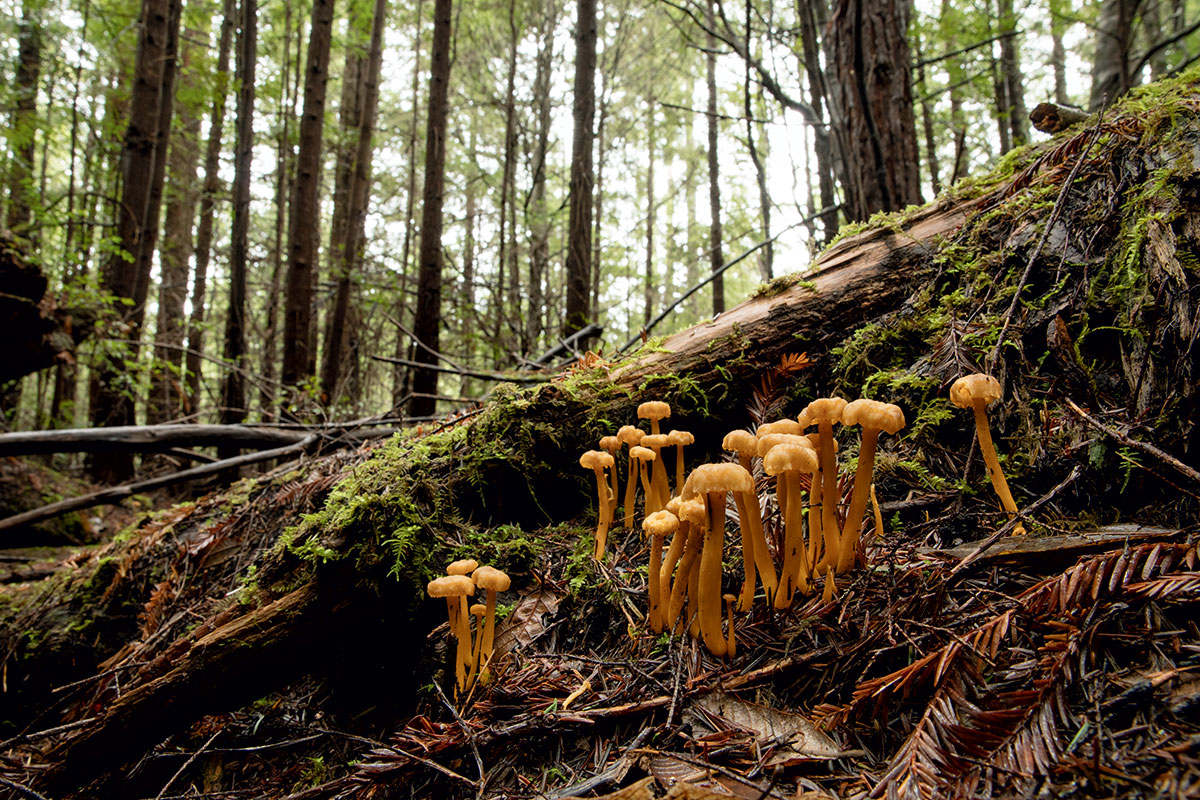
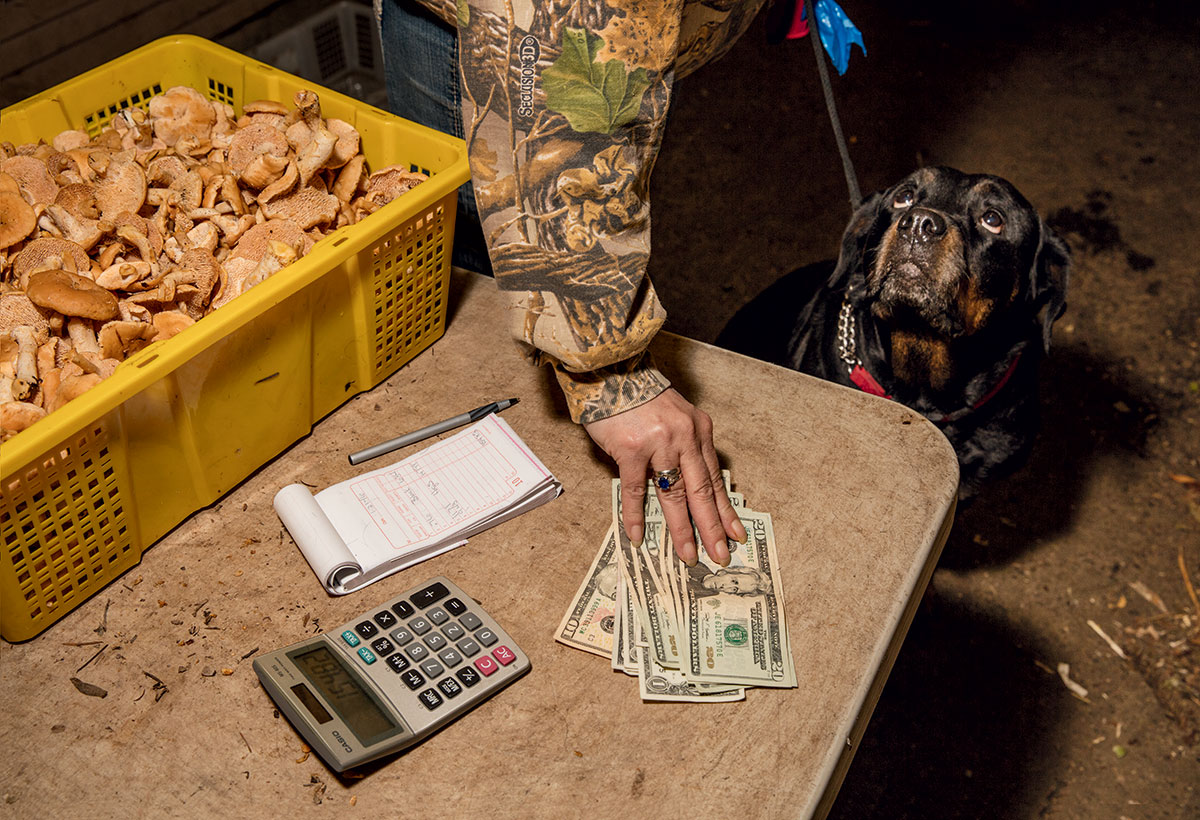
That’s the thing about the West Coast’s wild mushroom scene. The moment you think you’ve figured out how to dodge conflict, some strange soul shocks you with a warm welcome. And suddenly, you’re in. Back at the motor lodge in Willits, as buying and selling devolves into beer drinking and banter, Connie Green’s ragtag gang of rebels often resembles an old-fashioned family reunion. Everybody has a tale to tell – about the day they scored $1,000 in matsutake or the night they passed out among the trees, shivering under a tarp, too stoned to find the car.
When I joined Green last winter, she had just received her third Good Food Award at a San Francisco gala hosted by Carlo Petrini, founder of the Slow Food movement. Why, I asked, after all the culinary acclaim, does she still go out into the woods? “Mushroom hunters are the most optimistic people on earth,” Green replies. “We believe there’s rain around every corner.”
Follow us

This work is licensed under a Creative Commons Attribution-NoDerivatives 4.0 International License.
Want to republish a Modern Farmer story?
We are happy for Modern Farmer stories to be shared, and encourage you to republish our articles for your audience. When doing so, we ask that you follow these guidelines:
Please credit us and our writers
For the author byline, please use “Author Name, Modern Farmer.” At the top of our stories, if on the web, please include this text and link: “This story was originally published by Modern Farmer.”
Please make sure to include a link back to either our home page or the article URL.
At the bottom of the story, please include the following text:
“Modern Farmer is a nonprofit initiative dedicated to raising awareness and catalyzing action at the intersection of food, agriculture, and society. Read more at <link>Modern Farmer</link>.”
Use our widget
We’d like to be able to track our stories, so we ask that if you republish our content, you do so using our widget (located on the left hand side of the article). The HTML code has a built-in tracker that tells us the data and domain where the story was published, as well as view counts.
Check the image requirements
It’s your responsibility to confirm you're licensed to republish images in our articles. Some images, such as those from commercial providers, don't allow their images to be republished without permission or payment. Copyright terms are generally listed in the image caption and attribution. You are welcome to omit our images or substitute with your own. Charts and interactive graphics follow the same rules.
Don’t change too much. Or, ask us first.
Articles must be republished in their entirety. It’s okay to change references to time (“today” to “yesterday”) or location (“Iowa City, IA” to “here”). But please keep everything else the same.
If you feel strongly that a more material edit needs to be made, get in touch with us at [email protected]. We’re happy to discuss it with the original author, but we must have prior approval for changes before publication.
Special cases
Extracts. You may run the first few lines or paragraphs of the article and then say: “Read the full article at Modern Farmer” with a link back to the original article.
Quotes. You may quote authors provided you include a link back to the article URL.
Translations. These require writer approval. To inquire about translation of a Modern Farmer article, contact us at [email protected]
Signed consent / copyright release forms. These are not required, provided you are following these guidelines.
Print. Articles can be republished in print under these same rules, with the exception that you do not need to include the links.
Tag us
When sharing the story on social media, please tag us using the following: - Twitter (@ModFarm) - Facebook (@ModernFarmerMedia) - Instagram (@modfarm)
Use our content respectfully
Modern Farmer is a nonprofit and as such we share our content for free and in good faith in order to reach new audiences. Respectfully,
No selling ads against our stories. It’s okay to put our stories on pages with ads.
Don’t republish our material wholesale, or automatically; you need to select stories to be republished individually.
You have no rights to sell, license, syndicate, or otherwise represent yourself as the authorized owner of our material to any third parties. This means that you cannot actively publish or submit our work for syndication to third party platforms or apps like Apple News or Google News. We understand that publishers cannot fully control when certain third parties automatically summarize or crawl content from publishers’ own sites.
Keep in touch
We want to hear from you if you love Modern Farmer content, have a collaboration idea, or anything else to share. As a nonprofit outlet, we work in service of our community and are always open to comments, feedback, and ideas. Contact us at [email protected].by Brian Barth, Modern Farmer
September 19, 2016
Modern Farmer Weekly
Solutions Hub
Innovations, ideas and inspiration. Actionable solutions for a resilient food system.
ExploreExplore other topics
Share With Us
We want to hear from Modern Farmer readers who have thoughtful commentary, actionable solutions, or helpful ideas to share.
SubmitNecessary cookies are absolutely essential for the website to function properly. This category only includes cookies that ensures basic functionalities and security features of the website. These cookies do not store any personal information.
Any cookies that may not be particularly necessary for the website to function and are used specifically to collect user personal data via analytics, ads, other embedded contents are termed as non-necessary cookies.
I would like to sell you mushrooms